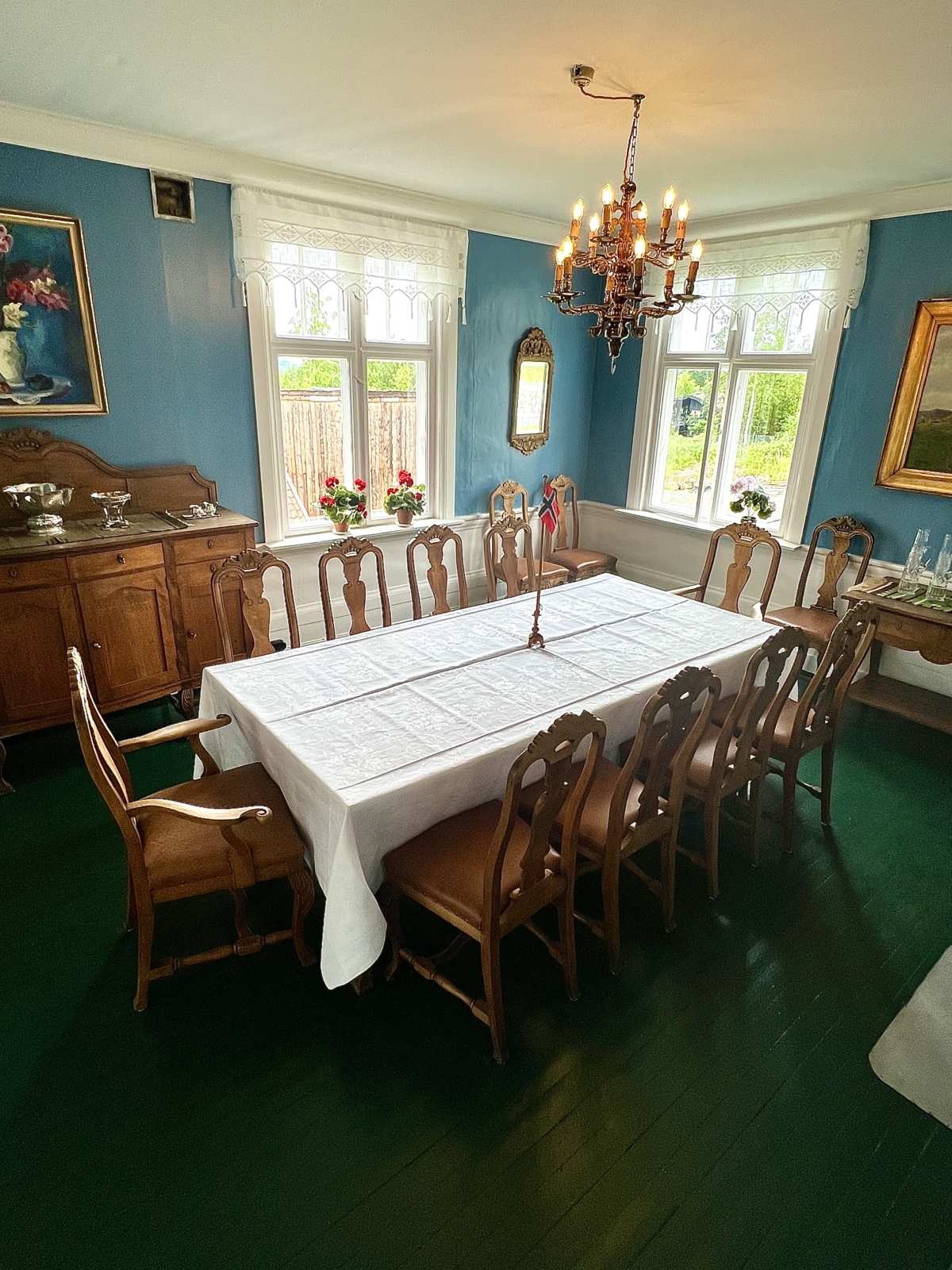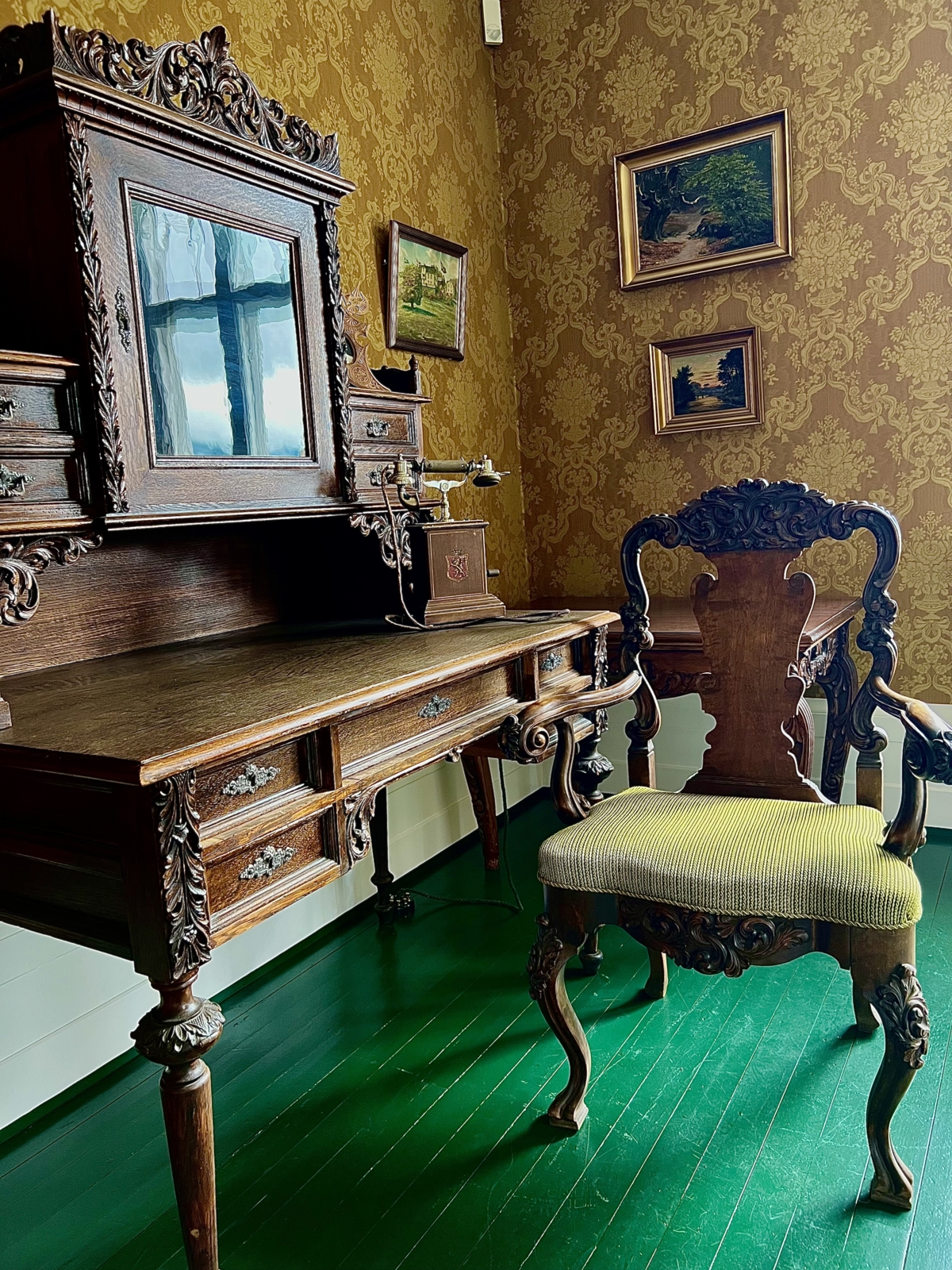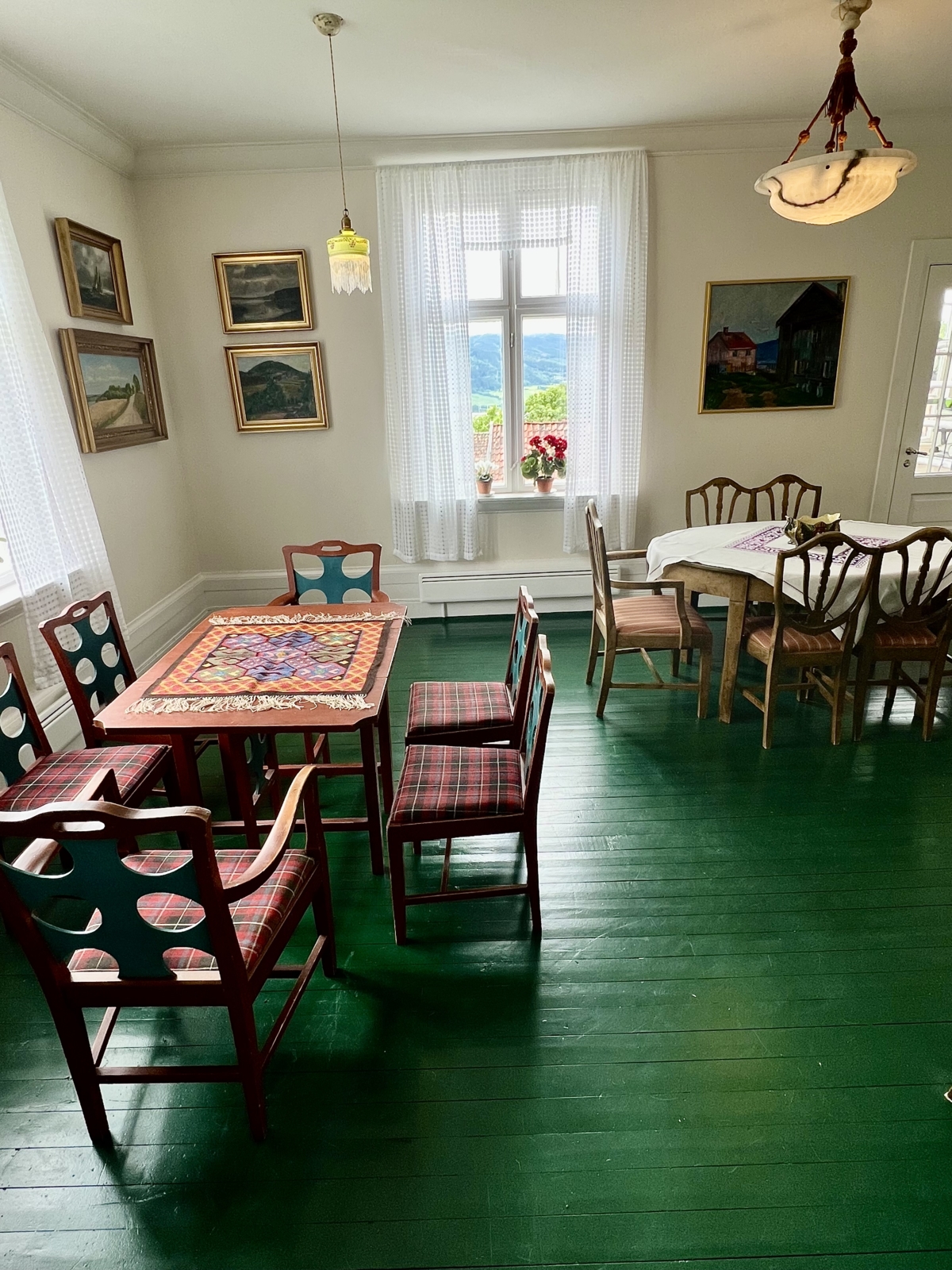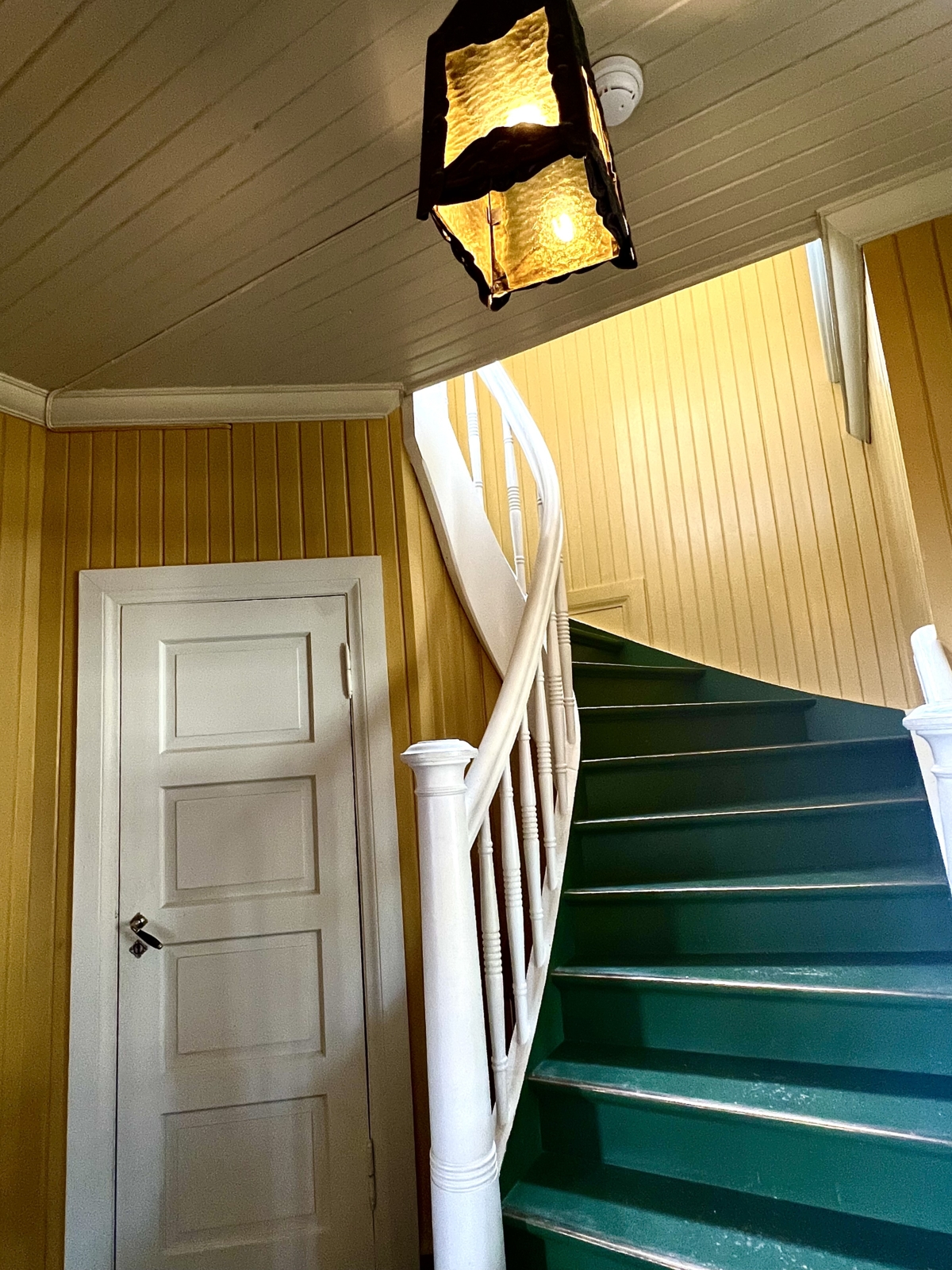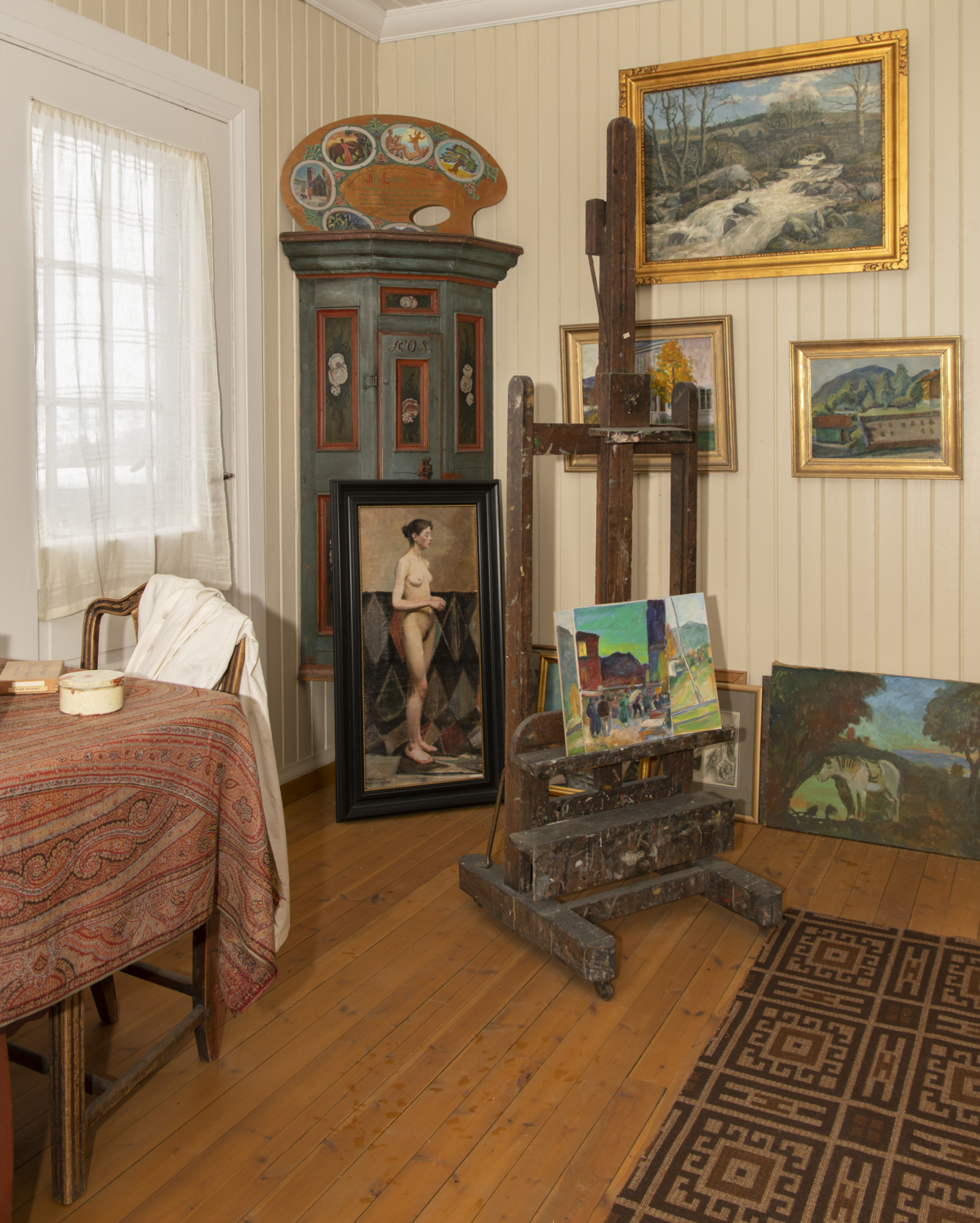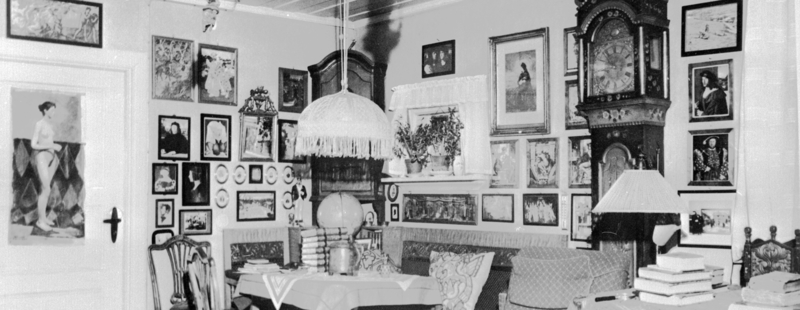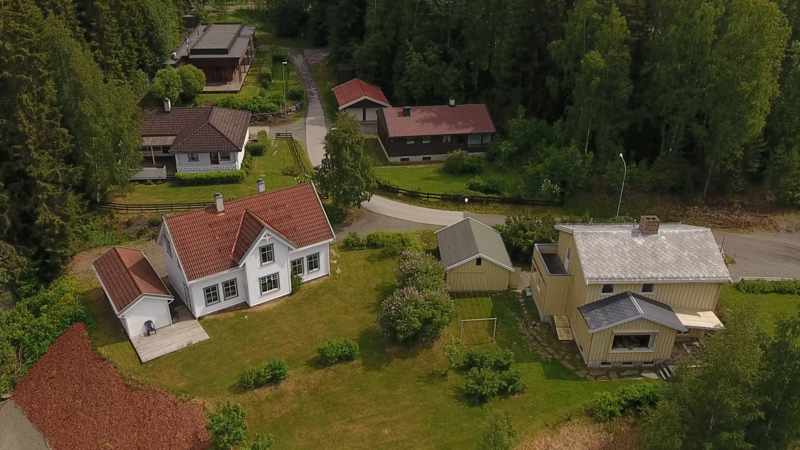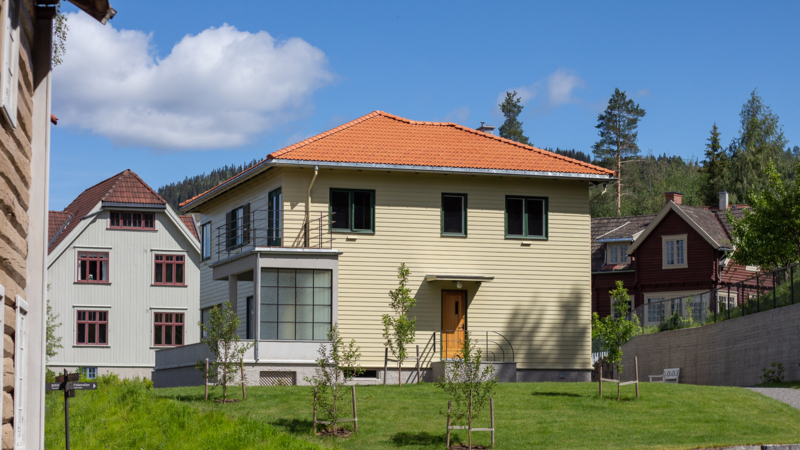
Photo: Tone Iren Eggen Tømte/Maihaugen
The house from 1915
Quality furniture and craftsmanship from the interwar period.
The 1915 house in the Residential Area at Maihaugen is a stately example of a Lillehammer villa, filled with exquisite furniture and craftsmanship, along with the studio of Lillehammer painter Alf Lundeby. The house stands prominently on the hillside above the town in the open-air museum, as part of Maihaugen’s unique representation of Norwegian residential culture throughout the 20th century.
In the Residential Area, you can explore a home from each decade of the last century, and the 1915 house represents the period from 1910 to 1920. The house was built by Hans J. Aas, who worked as a clerk at the renowned store Th. Lunde for 50 years. This connection to Th. Lunde is reflected in the interior design of Aas’s villa, with quality furniture and textiles that embody the style and craftsmanship of the time.
Th. Lunde was known for its wide selection of textiles and furnishings, and their quality furniture dominates the interior of the 1915 house. The museum uses the house to tell the story of craftsmanship in Lillehammer during the early interwar years, a period marked by collaboration between artists and local craftsmen.
The Lunde furniture, designed by renowned artists and architects, was strongly inspired by the collections at Maihaugen and produced in collaboration with local craftsmen. This collaboration was influenced by the Arts & Crafts movement, which emerged in England in the late 19th century as a reaction against mass-produced industrial goods. The movement aimed to promote high-quality craftsmanship and design.
On the second floor of the house, you’ll find the studio of Alf Lundeby (1870–1961), a famous painter from Lillehammer. The studio has been preserved just as it was in Lundeby’s home in Nordsetervegen when he passed away in 1961, offering a unique glimpse into the artist's working environment.
Visit the 1915 house in the Residential Area at Maihaugen to experience Norwegian housing history, craftsmanship, and art from the early 20th century, and learn more about how the Lunde furniture and the Arts & Crafts movement influenced Norwegian design and craftsmanship.
- The house was built in 1915.
- It was originally located just south of Lillehammer high school in Anders Sandvigs gate in Lillehammer.

